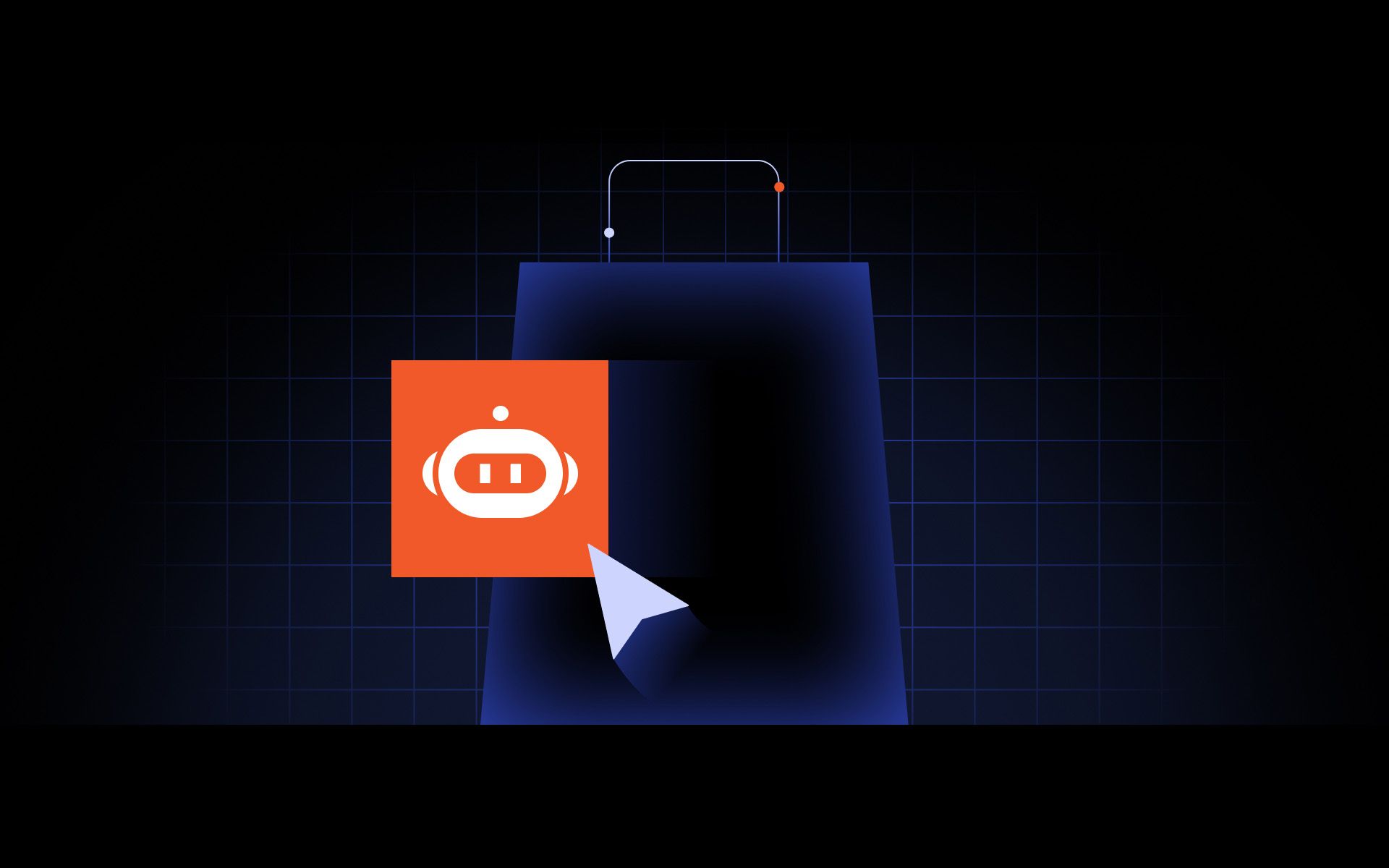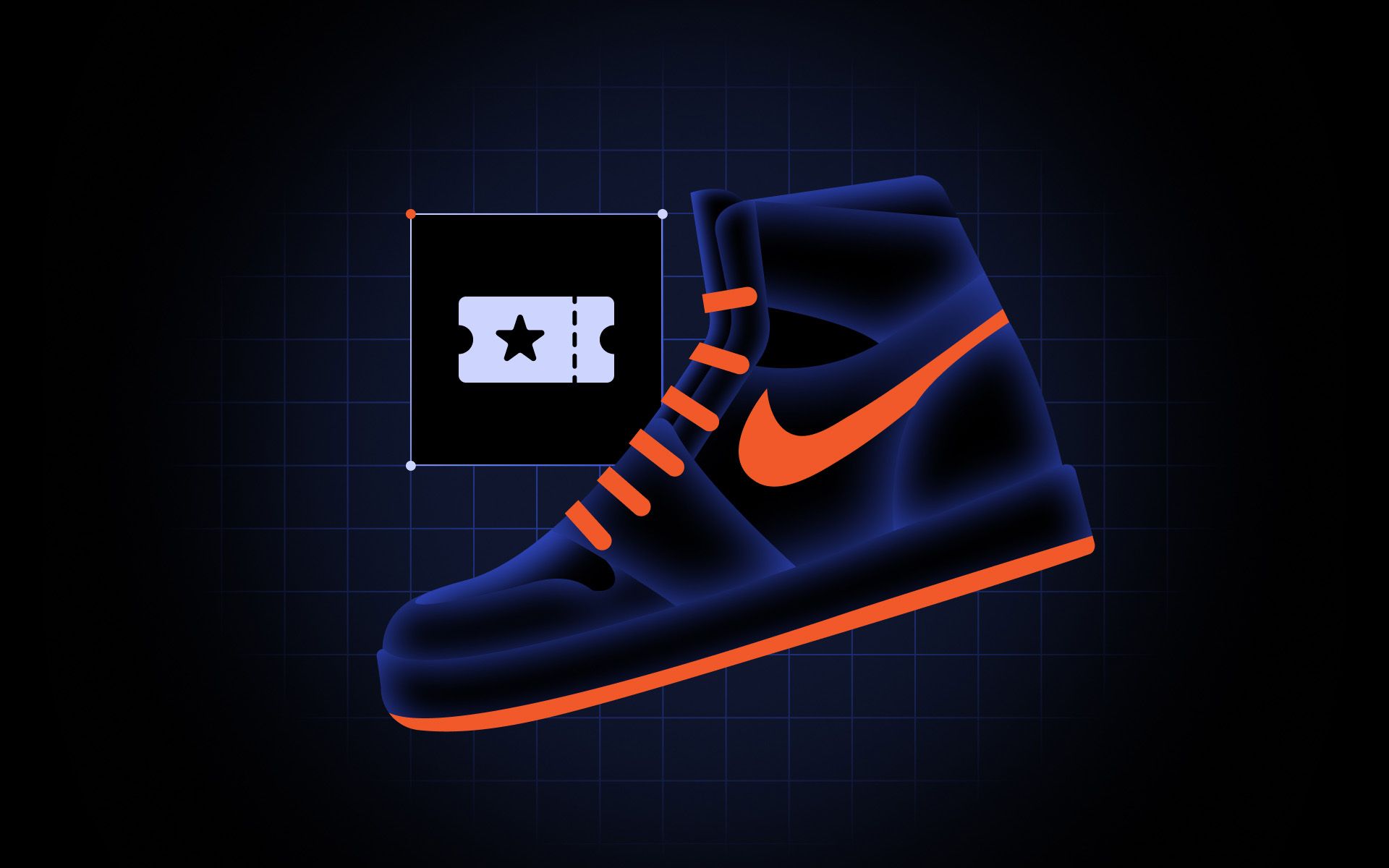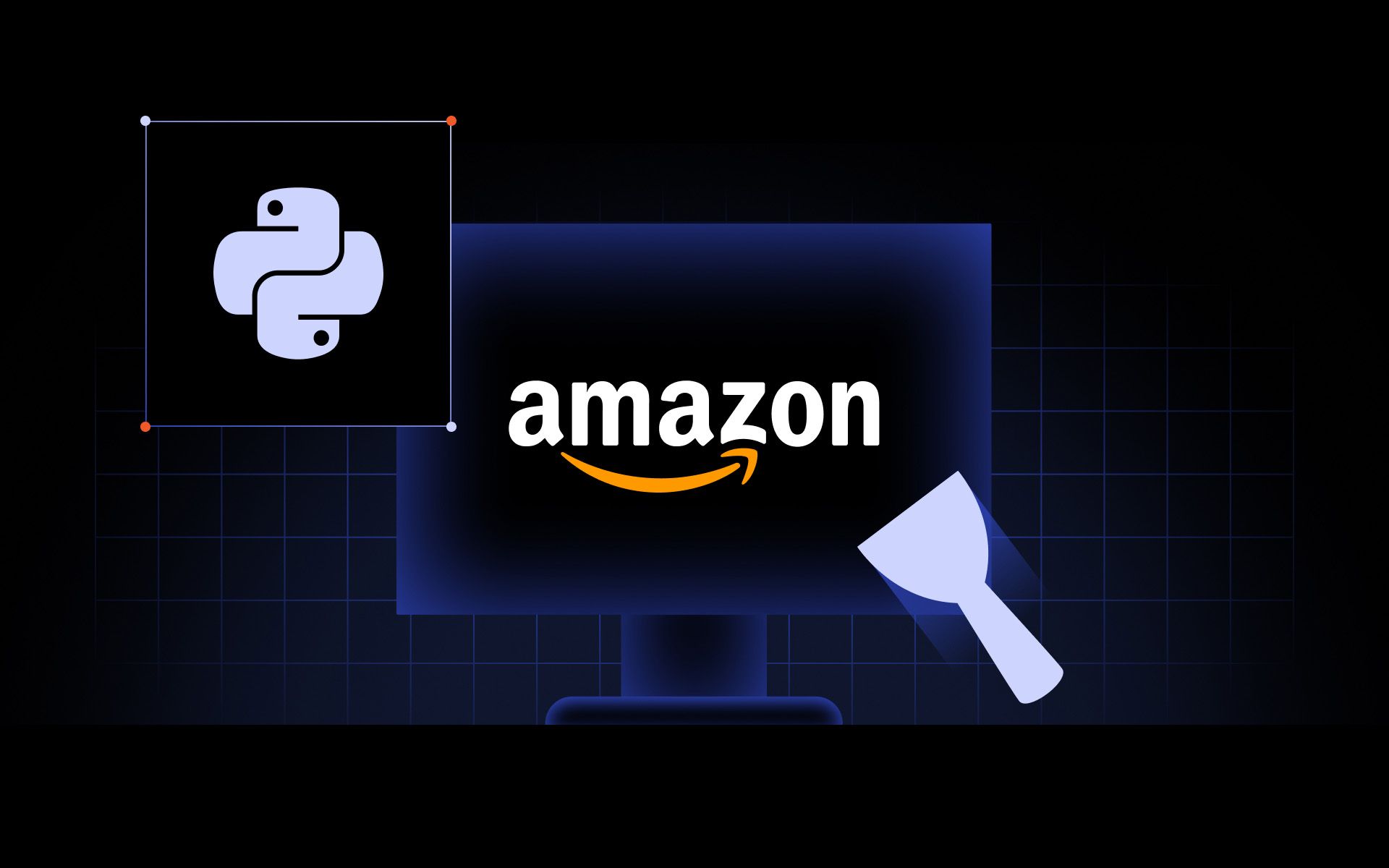What Is a Shopping Bot? Types, Benefits & Uses

Ever wondered who’s behind those helpful chat bubbles on retail websites or the tools that snag limited-release sneakers in seconds? The answer is often a shopping bot. In simple terms, a shopping bot is a software assistant, usually powered by modern tech like artificial intelligence, that helps automate and enhance the online shopping process.
These bots can take on many forms. Some chat with you like a virtual salesperson, while others search the web for deals or even speed through checkout forms on your behalf. They have become a huge part of e-commerce, transforming the way shoppers discover and purchase products.
In this blog post, we'll explain what a shopping bot is and how it’s different from regular chatbots or virtual assistants. We'll also dive into the types of shopping bots out there (from conversational helpers to price scanners and more), the key benefits they offer both shoppers and businesses, tips on how you can build the best shopping bots for your needs, and what the future holds.
By the end, you'll see why shopping bots are a big deal for anyone looking to improve the customer experience and stay ahead in the digital marketplace.
What is a shopping bot?
A shopping bot is an automated program or chatbot designed specifically to assist with shopping-related tasks. Unlike general-purpose chatbots that might handle all sorts of customer queries, shopping bots focus on the retail experience. They can help users search for products, provide personalized recommendations, compare prices, answer questions about items, and even facilitate purchases.
Some shopping bots are fairly simple (for example, a bot that answers FAQs about store policy), while others are more advanced and use machine learning to understand complex questions or preferences.
Shopping bot vs. chatbot vs. virtual assistant
It's useful to clarify the differences.
- A standard chatbot could be anything from a news update bot to a customer service bot, not necessarily sales-focused.
- Virtual assistants (like Siri, Alexa, or Google Assistant) are broad AI helpers that can handle tasks, including shopping, but they're not tied to one store or platform.
- A shopping bot, in contrast, is tailored for commerce. It might live on a retailer’s website, mobile app, or messaging platform and is purpose-built to streamline online shopping tasks.
These bots interact with users across various channels. You might encounter a shopping bot as a live chat widget on a website, guiding you through product categories. Or you might use one on Facebook Messenger or WhatsApp that can give product advice or track orders.
Some retailers deploy shopping assistants on social media. Whether on web, mobile, or social platforms, the shopping bot is there to make the shopping process smoother and more engaging for shoppers.
Types of shopping bots
There are many kinds of shopping bots, each specialized for a different aspect of the online shopping experience. The best shopping bots can handle everything from talking with customers to automatically buying products at lightning speed.
Here are some common types of shopping bots and what they do:
Conversational shopping bots
Conversational shopping bots are like virtual sales associates that engage users in real-time chat. They welcome visitors, ask questions to understand needs, and offer product guidance just as a helpful human assistant would.
These bots can recommend items, answer product questions, and even upsell or cross-sell based on your responses. They’re deployed on websites (via chat pop-ups), in mobile apps, or on messaging platforms like Facebook Messenger, Instagram DM, or WhatsApp.
For example, beauty retailer Sephora uses a Messenger-based shopping bot to assist customers. Sephora’s bot can ask about your makeup preferences and then give personalized recommendations. For example, suggesting a foundation that matches your skin tone or a lipstick in your favorite shade.
By engaging users in a friendly dialogue, conversational bots make online shopping feel more interactive and tailored. They also ensure no question goes unanswered, handling common customer queries instantly to keep the momentum going. This kind of bot greatly enhances the overall shopping experience by providing instant, personalized service 24/7.
Price comparison bots
Price comparison shopping bots act as your personal deal hunters. Instead of manually checking multiple websites for the best price on that new gadget or outfit, you can rely on a shopping bot to do it for you.
These bots search across numerous retailers and gather pricing info in seconds, presenting you with the cheapest or best-value option. They essentially make sure you never overpay if a lower price is out there.
Popular examples include Google Shopping (which aggregates product listings from many online stores) and mobile apps such as ShopSavvy. ShopSavvy, for instance, lets shoppers scan a barcode or search a product name and then shows a list of prices from various online and local stores.
With a price bot, a few taps can replace what might be hours of comparison shopping. The best shopping bots in this category even factor in things like shipping costs or available coupons to dig up the top deals. For bargain-hunting shoppers, price comparison bots make online shopping more efficient and wallet-friendly.
Inventory tracking bots
Inventory tracking bots help you stay on top of product availability. If an item is out of stock or hard to get, this kind of shopping bot keeps an eye on it for you.
The bot continually checks one or multiple websites to see if the product is back in stock or if new inventory has been added, and it sends you an alert (or even places a hold/order) the moment the item becomes available. People often use inventory trackers for limited-edition or high-demand products that tend to sell out quickly - think limited sneaker releases, game consoles like the PlayStation 5, or popular GPU cards like the RTX 5090.
To operate effectively, these bots may make very frequent queries to retail websites, which can trigger anti-bot defenses. That’s why inventory bots often use rotating residential proxies. By routing requests through a pool of different IP addresses, the bot avoids getting blocked for making too many requests from one IP. For expert tips on proxy integration, make sure to check out our Discord community!
Using a premium proxy network helps ensure the bot stays undetected while tracking stock in real time. In practice, an inventory tracking shopping bot could save you from constantly refreshing a product page. You’ll get a notification as soon as, say, that sold-out sneaker in your size is restocked, giving you a jump on other shoppers.
Automated checkout bots
Automated checkout bots are all about speed. When a product is in hot demand and might sell out in seconds, waiting around to manually fill in your details just won’t cut it. This type of shopping bot can automatically handle the entire checkout process at blazing speed: from adding the item to cart to entering shipping info and payment details (often in a fraction of the time a human could).
They’re widely used for limited-release drops like new sneaker launches (e.g., on Nike’s SNKRS app) or high-demand streetwear releases, where being milliseconds faster means the difference between securing the item or seeing a "sold out" message.
These bots are essentially the power tools of e-commerce purchasing. Because retailers and ticket sites commonly flag and ban suspicious rapid-fire purchase attempts, automated checkout bots rely on being both fast and stealthy.
One key to their success is using high-speed, undetectable proxies to mask their activity. Fast residential or even specific sneaker proxies from providers like MarsProxies allow the bot to connect through different IPs and avoid detection or throttling, all while maintaining low latency for quick actions.
In other words, proxies help the bot act like dozens of separate shoppers clicking the "Buy Now" button at the same time, without revealing that it’s one automated system. For anyone serious about nabbing limited-edition products, an automated checkout shopping bot (paired with quality proxies) is a game-changer.
Deal and coupon bots
Deal and coupon bots make saving money effortless by finding and applying discounts for you. If you’ve ever gone hunting for a promo code before hitting checkout, this kind of shopping bot can do the job in your stead.
Deal bots scan the web or their databases for available coupon codes, cashback offers, or promotions that could apply to your purchase, and they either alert you or automatically apply the best one. Some also keep track of upcoming sales or daily deals and will notify you so you don't miss out.
Examples include browser tools like Capital One Shopping and Rakuten, which automatically search for valid promo codes and cashback offers at checkout.
Benefits of shopping bots
Shopping bots bring significant benefits to both consumers and businesses. By automating and personalizing parts of the shopping process, they create a win-win scenario: shoppers get a more convenient, tailored experience, and companies benefit through higher conversions, lower support costs, and a better overall customer experience.
Let’s break down the advantages for each side:
Benefits for shoppers
- 24/7 assistance
A shopping bot never sleeps, which means you can get help whenever you need it. Whether it’s late at night or a holiday, bots are there to answer questions and guide you.
If you’re shopping at 2 AM and want to know about a product’s features or need help finding an item, the bot is ready to assist. This round-the-clock availability makes online shopping more accessible and stress-free for customers with busy schedules.
- Personalized shopping experience
Because many bots take advantage of AI and user data, they can offer personalized recommendations that make your shopping experience feel custom-tailored. As you interact with a conversational shopping bot, it might learn your preferences (such as styles you like or past purchases) and then show you relevant products you’re likely to love.
These product recommendations can introduce you to items you might not have found on your own, almost like a personal shopper service. The result is a more engaging, enjoyable experience and often a better find of products that truly match your taste.
- Savings and deals without the hassle
Price-focused bots ensure you don’t miss out on sales or discounts. A price comparison bot can notify you if the item you want just dropped in price somewhere else. A coupon bot can automatically apply a promo code that saves you money.
Essentially, shopping bots help you get the best bang for your buck without requiring any extra effort. You can shop with confidence knowing the bot has scoured for better deals or available coupons – a big win for bargain-hunting shoppers.
Benefits for businesses
- Higher conversion rates and sales
When shoppers get quick answers and spot-on product recommendations, they're more likely to complete a purchase. By addressing customer concerns or suggesting items they'll love in real time, a shopping bot can reduce cart abandonment and increase sales.
- Round-the-clock customer service at lower cost
Hiring live support agents 24/7 is expensive, but a shopping bot can handle thousands of inquiries simultaneously and consistently, at a fraction of the cost. Routine customer queries can be answered instantly by the shopping bot, so customers get immediate help while human staff focus on more complex issues, improving efficiency and customer satisfaction.
- Better customer insights
Bots don't just assist customers, they also collect useful data. By tracking user questions and behavior, a bot gives businesses insights into what customers want, common pain points, and emerging trends that can inform marketing and product decisions.
- Personalized experiences
A purchasing bot can tailor interactions to each user. It can segment shoppers by preferences or behavior and deliver relevant product recommendations or special offers, making customers feel understood and boosting engagement.
How to build a shopping bot
To build your own shopping bot, consider the following steps:
- Define your goals
Determine what tasks your bot should perform (e.g., answer customer queries, recommend products, assist with checkout, etc.).
2. Choose a platform
Select a chatbot builder or framework suited to your bot needs (from plug-and-play tools for e-commerce sites to advanced AI platforms for custom bots).
3. Design the conversation flow
Specify how the bot will interact with users. This includes greetings, question/answer logic, and how it should handle various scenarios.
4. Integrate with your systems
Connect the bot to relevant data sources such as your product catalog, inventory, and order system, so it can retrieve information and perform actions.
5. Use supporting tools
For bots that scrape websites or handle heavy automation, use proxies and other tools to ensure they run smoothly. For example, rotating proxies from a provider like MarsProxies can help avoid IP blocks.
6. Test and launch
Try out your bot in different scenarios and fix any issues. Once it's working well, deploy it on your site or platform. Don’t forget to monitor its performance, making improvements over time.
Future of shopping bots
- Smarter AI and real-time personalization
As machine learning and artificial intelligence progress, these particular bots will become even better at understanding users and personalizing suggestions on the fly. They will analyze customer data in real time to offer more relevant personalized recommendations, making online interactions feel even more human-like.
- Voice-based shopping assistants
With the popularity of voice assistants (Alexa, Google Assistant, and others), more bot features will integrate with voice. Shoppers will increasingly be able to search and buy products using voice commands, engaging with retail bots as naturally as having a conversation.
- Integration into AR/VR and stores
As augmented and virtual reality shopping grows, bots will act as personal assistants in those environments (for example, guiding you in a virtual store). Even in physical stores, retailers might use apps or kiosks with bots to provide product info or recommendations, blending online shopping convenience with in-store experiences.
- Greater role in B2B commerce
Beyond retail, businesses will use these bots to automate purchasing and procurement. From reordering supplies to comparing vendor prices, bots will make business purchasing more efficient, further expanding their presence across industries.
Final thoughts
Shopping bots are changing the way we shop and how businesses serve their customers. From faster service and personalized help for shoppers to higher sales and efficiency for retailers, these bots provide significant advantages.
As we move toward the end of 2025, adopting the right bots could give your e-commerce business the competitive edge it needs. In a world where instant service and personalization define the customer experience, these bots are quickly becoming a must-have tool.



